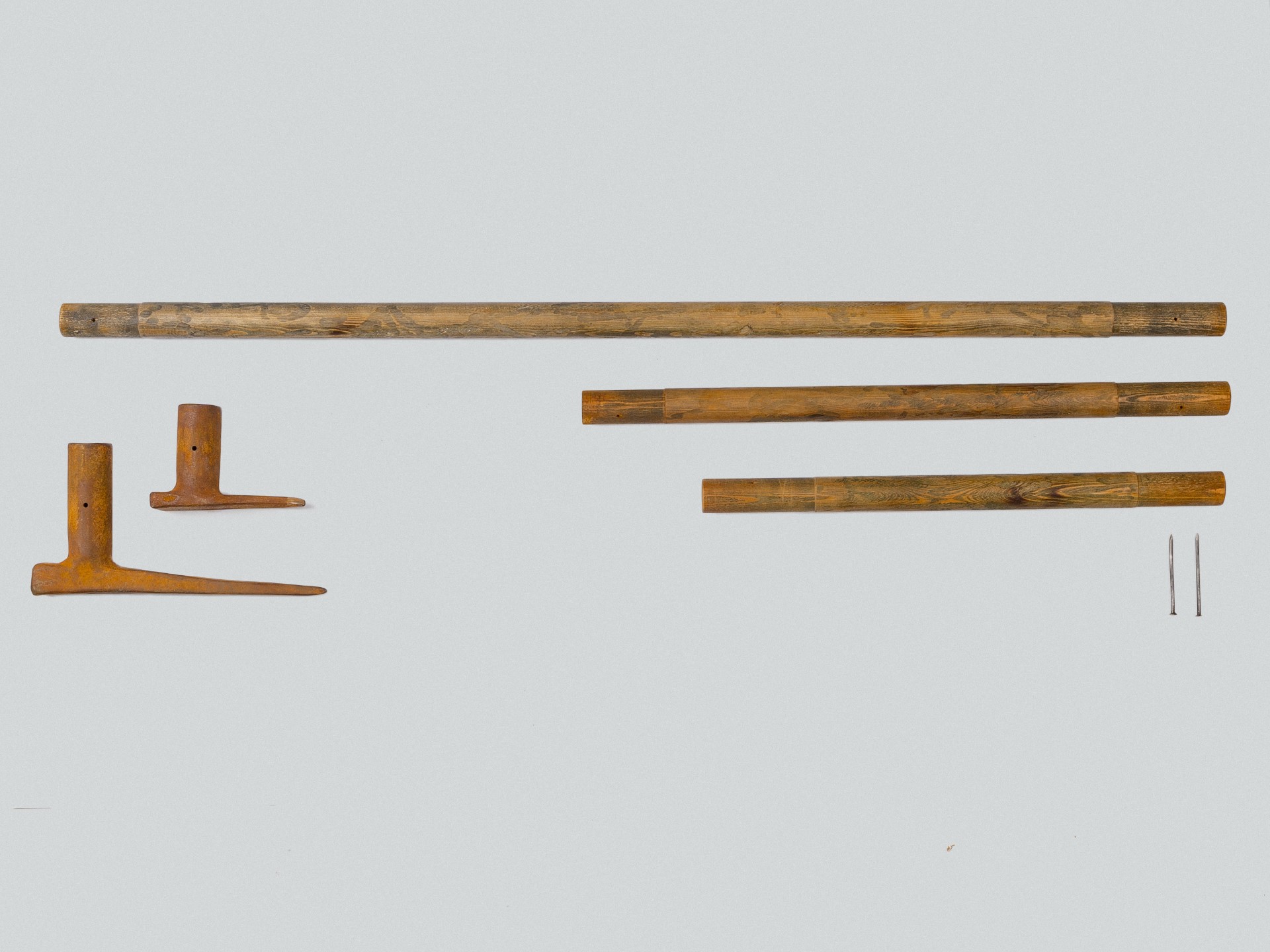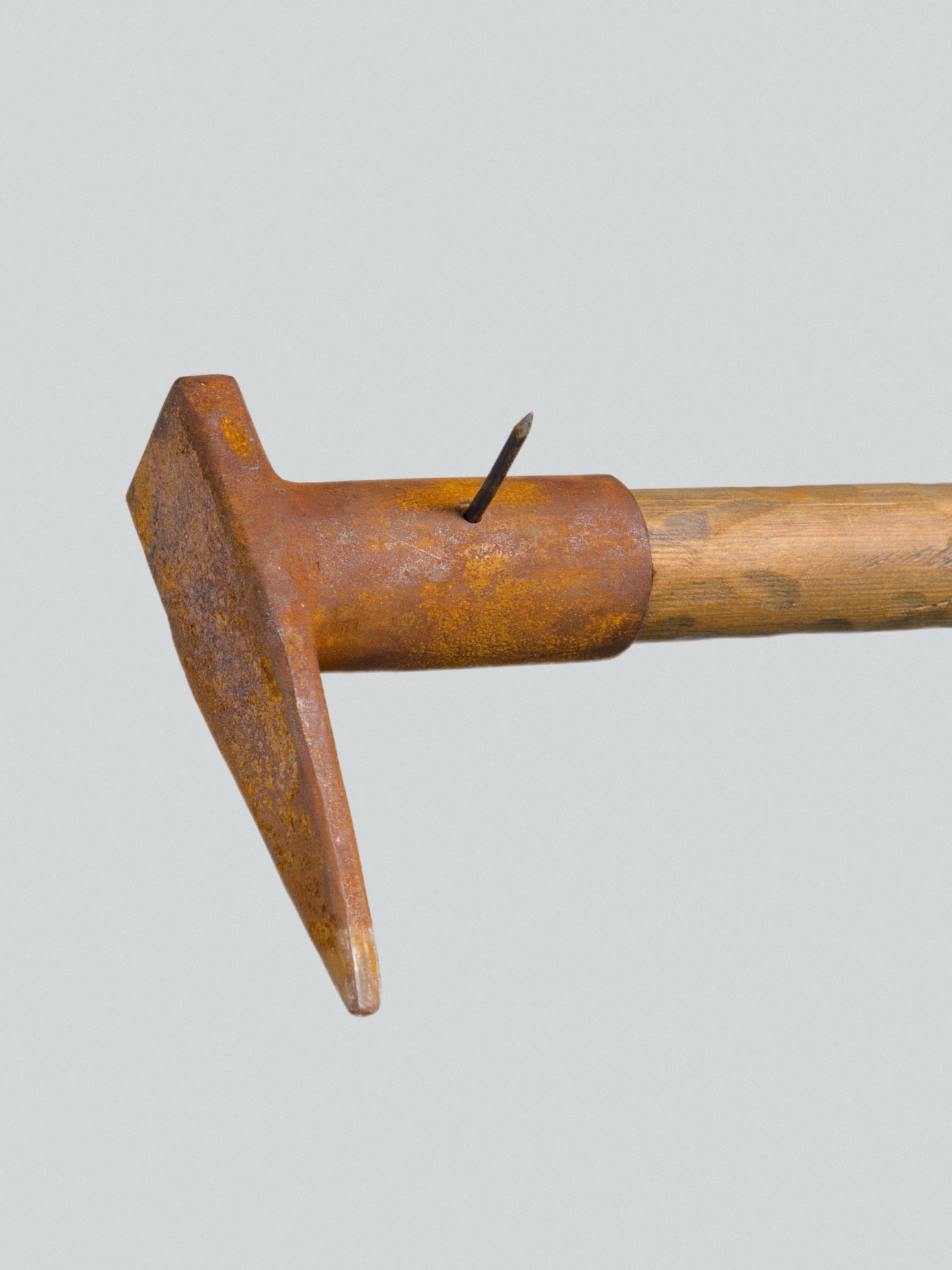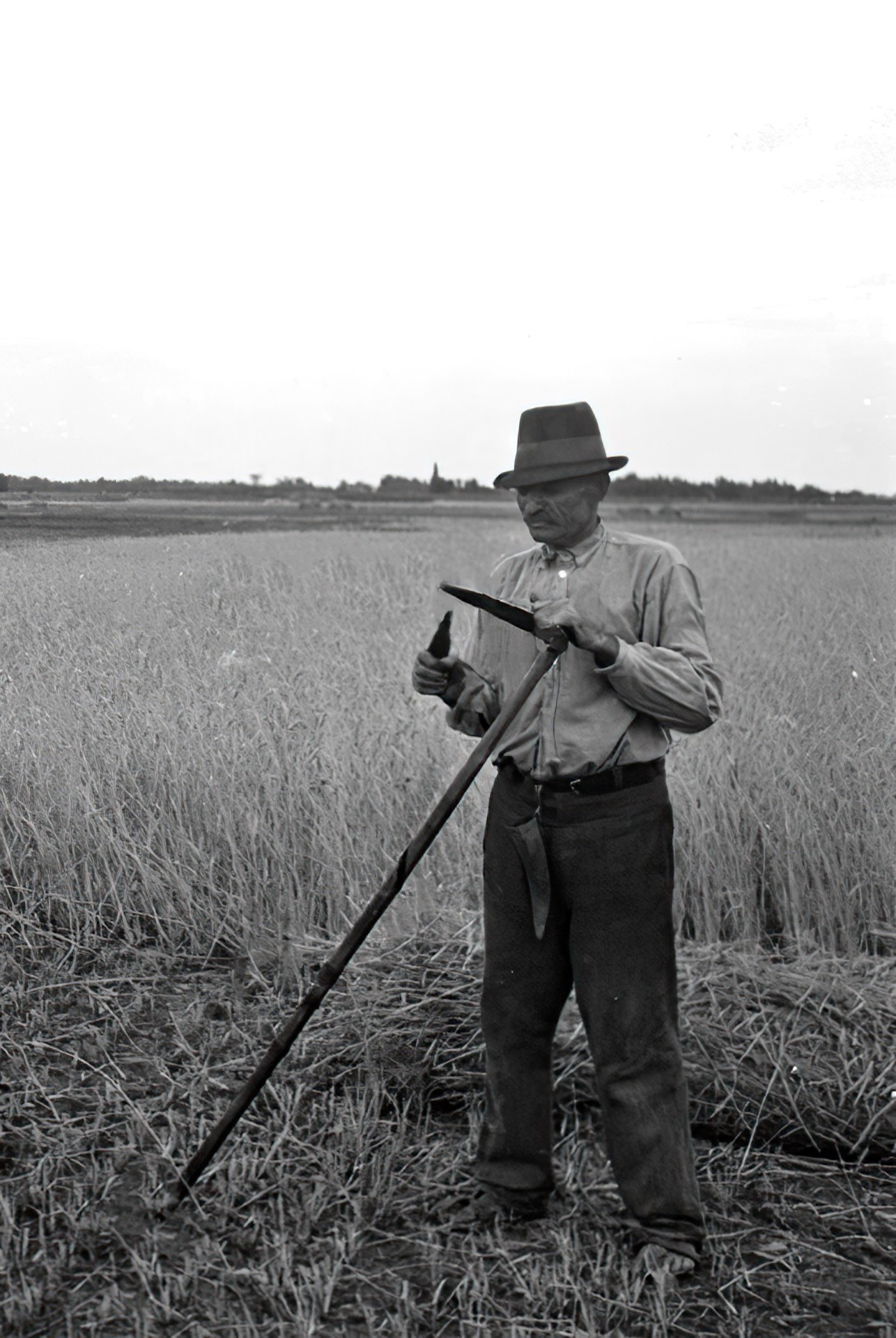The chidder used to be a synonym for water, but nowadays it is not used nor well known anymore. Chidder means a watery pit its modern equivalent is the well (in hungarian:kút). Here is a short anecdote on how the chidder became the well:
Elek Benedek: The well
A Hungarian man once dug a round "chidder" in his yard.
An English man came to him and asked:
- What are you digging, brother?
- A chidder, said the Hungarian man.
- Well,well – said the German.
- It's not a well said the Hungarian man, it's a chidder.
- Well,well, replied the German again.
- Ok, if it's a well, let it be a well, said the Hungarian man.
So the chidder became a well.
The chidder-puller was a necessary tool for the process of digging a well. It was widely used in Hungary until the middle of the 20th century. On the one hand, it was essential to mark the location of the well: the longer end of the tool was placed in the ground to fix the center, while with the shorter it carved a circle, the outline of the well. This is why the word “puller” got attached to “chidder”. On the other hand during the digging it was used to check the diameter of the well.
The chidder-puller consists of three parts: the central element is a wooden rod, which is half as long as the diameter of the well. Two metal heads of different sizes (a long and a short one) were attached to its ends and temporarily fixed to the tree by means of nails. The wooden pole was regularly replaced depending on the size of the upcoming well. Some were made of acacia wood, but there are also remaining pieces carved from pine. The two metal ends were made of iron alloy. The chidder-pullers were passed down from generation to generation. Some are more than 150 years old.
But how did people use it? The longer metal head was hammered into the ground so deep that the shorter head reached the surface of the ground with the wooden pole horizontal. The system worked using the principle of the compass, as the circular outline was carved by the head above the ground. The nails keeping the rod and the metal heads together were pulled out with pliers when the pole was replaced with a different size of wood. The metal heads, which fit in the hand without the wooden rod, were used in a variety of ways in agriculture and as weapons when the situation called for it.


